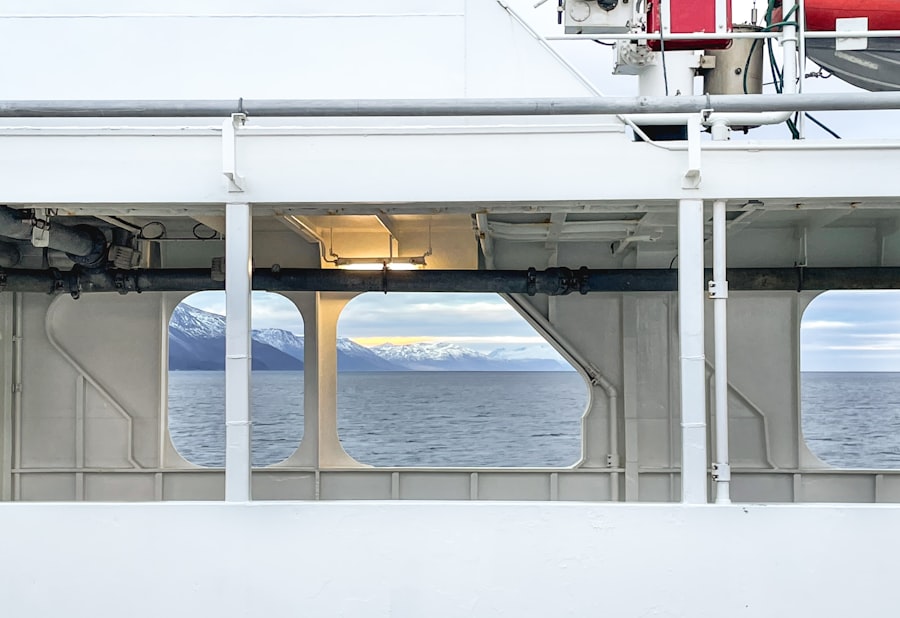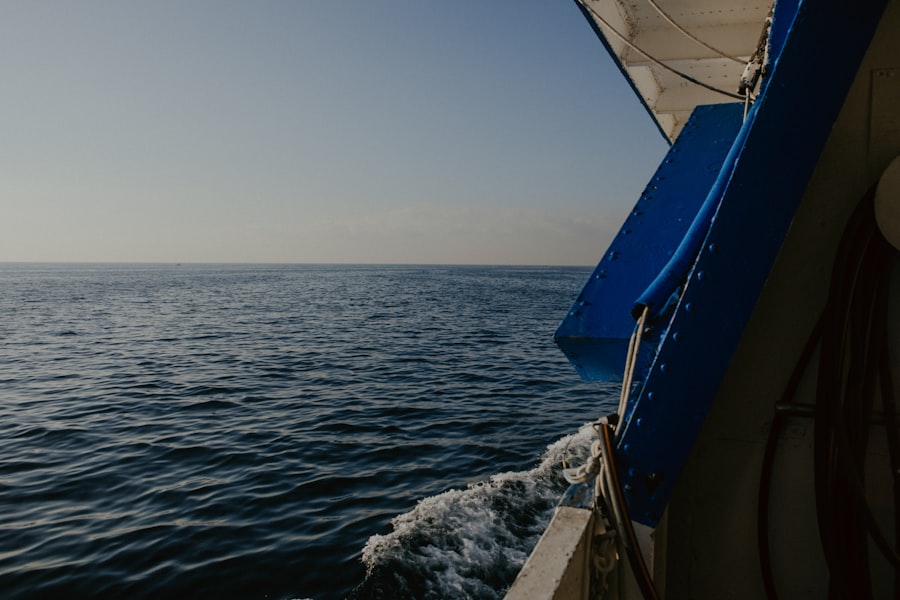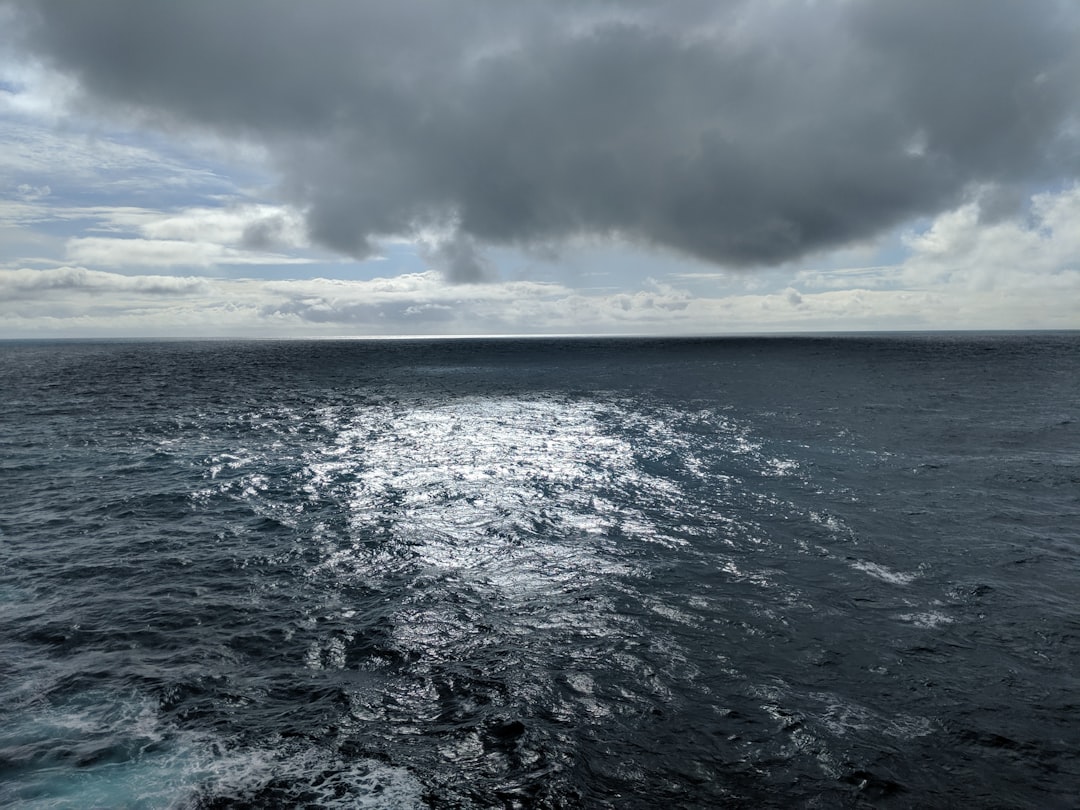The Drake Passage, a body of water situated between the southern tip of South America and Antarctica, is renowned for its tumultuous seas and breathtaking vistas. This narrow stretch of ocean, measuring approximately 800 kilometers (500 miles) wide, serves as a critical conduit for maritime traffic between the Atlantic and Pacific Oceans. Its strategic location not only makes it a vital route for shipping and research vessels but also a popular destination for adventurous travelers seeking to explore the remote wilderness of Antarctica.
The passage is named after the English explorer Sir Francis Drake, who was the first to navigate these waters in the late 16th century, and it has since become synonymous with both peril and beauty. The Drake Passage is often characterized by its unpredictable weather patterns and challenging sea conditions, which can transform a seemingly calm day into a tempestuous ordeal within moments. This unpredictability has earned the passage a reputation as one of the most treacherous maritime routes in the world.
The allure of crossing the Drake Passage lies not only in the thrill of navigating its turbulent waves but also in the promise of encountering some of the most stunning natural landscapes and diverse wildlife on the planet.
Key Takeaways
- The Drake Passage is a body of water between South America’s Cape Horn and the South Shetland Islands of Antarctica, known for its challenging weather and sea conditions.
- The Drake Passage has a rich historical significance as it was named after the English explorer Sir Francis Drake and has been a key route for explorers and expeditions to reach Antarctica.
- The weather in the Drake Passage is notoriously unpredictable, with strong winds and rough seas making it one of the roughest stretches of water in the world.
- The Drake Passage is home to a diverse range of wildlife, including penguins, seals, and various species of whales, as well as stunning natural beauty with icebergs and glaciers.
- Navigating the Drake Passage presents challenges such as strong currents and icebergs, and strategies such as using experienced captains and modern technology are employed to ensure safe passage.
Historical significance of the Drake Passage
The historical significance of the Drake Passage cannot be overstated. It has long been a pivotal route for explorers, traders, and scientists alike. In the late 1500s, Sir Francis Drake became the first known European to sail through these waters, marking a significant moment in maritime history.
His journey was not merely an act of exploration; it was also a quest for trade routes and territorial claims during an era when European powers were vying for dominance in the New World. Drake’s successful navigation of the passage opened up new possibilities for exploration and trade, paving the way for future expeditions to Antarctica. Throughout the centuries, the Drake Passage has continued to play a crucial role in global exploration.
It served as a gateway for numerous expeditions aimed at uncovering the mysteries of Antarctica. Notable figures such as Ernest Shackleton and Robert Falcon Scott traversed these waters in their quests to reach the South Pole. Their journeys were fraught with peril, yet they contributed significantly to our understanding of polar regions and their ecosystems.
The passage has thus become a symbol of human resilience and determination in the face of nature’s challenges.
Weather and sea conditions in the Drake Passage

The weather and sea conditions in the Drake Passage are notoriously volatile, making it a formidable challenge for even the most seasoned mariners.
Sailors often describe the passage as having “the worst weather on Earth,” with waves that can reach heights of up to 30 feet during storms.
This unpredictability is exacerbated by strong winds that can whip across the open ocean, further complicating navigation. Despite these challenges, many vessels successfully traverse the Drake Passage each year. Mariners must be well-prepared for rapidly changing conditions, which can include everything from calm seas to violent gales within a single day.
Understanding weather patterns and utilizing advanced forecasting technology are essential strategies for ensuring safe passage. Additionally, experienced crews often rely on their knowledge of local conditions and historical weather data to make informed decisions about when to set sail and how to navigate through turbulent waters.
Wildlife and natural beauty of the Drake Passage
| Aspect | Details |
|---|---|
| Wildlife | Penguins, seals, whales, and seabirds can be spotted in the Drake Passage. |
| Natural Beauty | The Drake Passage offers stunning views of icebergs, glaciers, and dramatic landscapes. |
| Climate | The weather can be unpredictable, with strong winds and rough seas, adding to the sense of adventure. |
| Conservation | Efforts are being made to protect the wildlife and natural environment of the Drake Passage. |
The Drake Passage is not only known for its challenging conditions but also for its remarkable wildlife and stunning natural beauty. The waters are teeming with life, serving as a feeding ground for various species of marine animals. Whales, including humpbacks, orcas, and minke whales, are frequently spotted in these waters, drawing wildlife enthusiasts from around the globe.
The passage is also home to an array of seabirds, such as albatrosses and petrels, which glide gracefully above the waves, often following ships on their journeys. In addition to its rich marine life, the Drake Passage offers breathtaking views of icebergs and glaciers that dot its landscape. The stark contrast between the deep blue ocean and the brilliant white ice creates a mesmerizing visual experience that captivates all who venture through these waters.
The rugged coastline of Antarctica looms in the distance, providing a dramatic backdrop that enhances the sense of adventure. For many travelers, witnessing this pristine wilderness is one of the highlights of their journey across the Drake Passage.
Navigating the Drake Passage: challenges and strategies
Navigating the Drake Passage presents numerous challenges that require careful planning and execution. The unpredictable weather patterns can create hazardous conditions that demand quick thinking and adaptability from crew members. Mariners must be prepared to adjust their routes based on real-time weather updates and sea conditions.
This often involves making split-second decisions about whether to continue sailing or seek shelter in calmer waters. To successfully navigate these treacherous waters, experienced crews employ various strategies. One common approach is to take advantage of favorable currents and winds whenever possible.
Understanding tidal patterns and ocean currents can significantly impact a vessel’s speed and efficiency during transit. Additionally, many modern ships are equipped with advanced navigation technology that allows crews to monitor weather patterns and sea conditions closely, enabling them to make informed decisions throughout their journey.
Safety precautions for crossing the Drake Passage

Safety is paramount when crossing the Drake Passage, given its reputation for unpredictable weather and rough seas. Mariners must adhere to strict safety protocols to ensure the well-being of both crew members and passengers. One essential precaution is conducting thorough safety briefings before departure, which include instructions on emergency procedures and equipment usage.
Life jackets, lifeboats, and other safety gear must be readily accessible and in good working condition. In addition to equipment checks, crews are trained to recognize signs of distress or potential hazards while at sea. Regular drills are conducted to prepare everyone on board for emergencies such as man overboard situations or severe weather events.
Communication is also crucial; maintaining contact with other vessels in the area can provide valuable information about changing conditions or potential dangers ahead.
Popular routes and destinations in the Drake Passage
The Drake Passage serves as a gateway to some of the most sought-after destinations in Antarctica. Many cruise lines offer itineraries that include stops at iconic locations such as Deception Island, known for its volcanic landscape and rich history as a whaling station. Other popular destinations include Half Moon Island, where visitors can observe colonies of Gentoo penguins, and Paradise Bay, famous for its stunning ice formations and breathtaking scenery.
In addition to these stops, many expeditions take travelers further south into Antarctic waters, where they can explore remote areas like the Antarctic Peninsula or visit research stations operated by various countries. These journeys often provide opportunities for wildlife encounters, including sightings of seals, penguins, and various seabird species. The combination of adventure and exploration makes these routes particularly appealing to those seeking an unforgettable experience in one of Earth’s last frontiers.
Tips for preparing for a crossing of the Drake Passage
Preparing for a crossing of the Drake Passage requires careful consideration and planning. Travelers should begin by researching their chosen expedition or cruise line thoroughly to ensure they understand what to expect during their journey. Packing appropriately is crucial; layers of clothing are recommended due to rapidly changing temperatures and weather conditions.
Waterproof gear is also essential, as splashes from waves can drench passengers during rough seas. In addition to physical preparations, travelers should mentally prepare themselves for the experience ahead. Understanding that conditions can be unpredictable will help set realistic expectations for what may lie ahead during their crossing.
Engaging with fellow travelers or joining online forums can provide valuable insights from those who have previously navigated these waters, helping newcomers feel more at ease about their upcoming adventure.
The experience of crossing the Drake Passage
Crossing the Drake Passage is an experience unlike any other—a blend of exhilaration, anticipation, and awe-inspiring beauty. As vessels set sail from Ushuaia, Argentina, passengers often feel a mix of excitement and trepidation about what lies ahead. The initial days at sea may be marked by choppy waters as ships navigate through turbulent waves; however, this only adds to the sense of adventure that permeates the journey.
As travelers venture deeper into the passage, they are treated to breathtaking views of icebergs floating majestically in the water and seabirds soaring overhead. Many find themselves captivated by moments spent on deck, watching for whales or simply taking in the vastness of their surroundings. The camaraderie among fellow passengers often grows stronger during this time as they share stories and experiences while braving nature’s elements together.
Famous expeditions and explorations through the Drake Passage
Throughout history, numerous famous expeditions have traversed the Drake Passage, each contributing to our understanding of polar exploration. One notable expedition was led by Ernest Shackleton aboard his ship Endurance in 1914. Shackleton’s journey aimed to cross Antarctica from coast to coast but was thwarted when his ship became trapped in pack ice within sight of land.
Despite facing unimaginable hardships, Shackleton’s leadership ultimately led his crew to safety after an arduous journey across treacherous waters. Another significant expedition was Robert Falcon Scott’s ill-fated journey to reach the South Pole in 1911-1912. Scott’s team faced extreme weather conditions while navigating through the Drake Passage en route to their destination.
Tragically, they perished on their return journey due to harsh conditions; however, their contributions to scientific research during their time in Antarctica remain invaluable today.
The allure and adventure of crossing the Drake Passage
The allure of crossing the Drake Passage lies not only in its breathtaking landscapes but also in its rich history and sense of adventure that beckons explorers from around the world. While navigating these tumultuous waters presents undeniable challenges, it also offers unparalleled opportunities for discovery—both of nature’s wonders and one’s own resilience in facing adversity. For those who dare to embark on this journey, crossing the Drake Passage becomes more than just a maritime adventure; it transforms into an unforgettable experience that leaves lasting memories etched in their hearts forever.
Whether witnessing majestic whales breach against a backdrop of icy cliffs or sharing stories with fellow travelers under starlit skies at sea, each moment spent traversing this remarkable passage serves as a reminder of humanity’s enduring spirit in exploring even the most remote corners of our planet.
Crossing the Drake Passage in December is an exhilarating adventure that offers a unique blend of natural beauty and challenging conditions. This journey, often considered a rite of passage for explorers heading to Antarctica, is renowned for its unpredictable weather and rough seas. For those interested in learning more about the experiences and preparations involved in such a voyage, a related article can be found on MyGeoQuest. This article provides insights into the logistics and excitement of navigating one of the world’s most infamous stretches of water. For more details, you can read the full article by visiting MyGeoQuest’s sample page.
WATCH NOW! Drake Passage: Earth’s Deadliest Waters Revealed
FAQs
What is the Drake Passage?
The Drake Passage is the body of water between the southern tip of South America and the northern tip of the Antarctic Peninsula. It is known for its rough seas and challenging sailing conditions.
Is it safe to cross the Drake Passage in December?
Crossing the Drake Passage in December can be challenging due to the strong winds and rough seas that are common during this time of year. It is important to be prepared for potentially adverse weather conditions.
What are the typical weather conditions in the Drake Passage in December?
In December, the weather in the Drake Passage can be unpredictable, with strong winds, rough seas, and the potential for storms. It is important to be prepared for cold temperatures and inclement weather.
What are the best ways to prepare for crossing the Drake Passage in December?
To prepare for crossing the Drake Passage in December, it is important to pack warm, waterproof clothing, and to be mentally prepared for potentially rough sailing conditions. It is also advisable to consult with experienced sailors or tour operators for advice and guidance.
Are there any specific safety precautions to take when crossing the Drake Passage in December?
When crossing the Drake Passage in December, it is important to follow the guidance of experienced sailors or tour operators, and to adhere to safety protocols on board the vessel. It is also advisable to have a thorough understanding of the potential risks and to be prepared for emergency situations.
